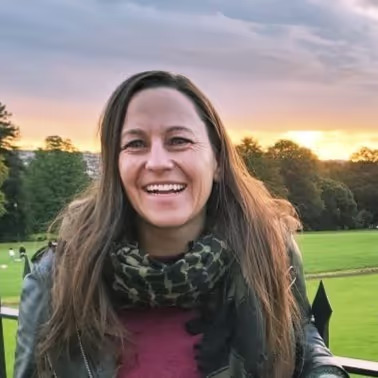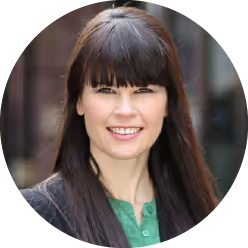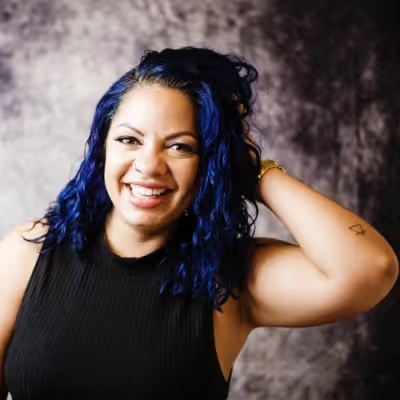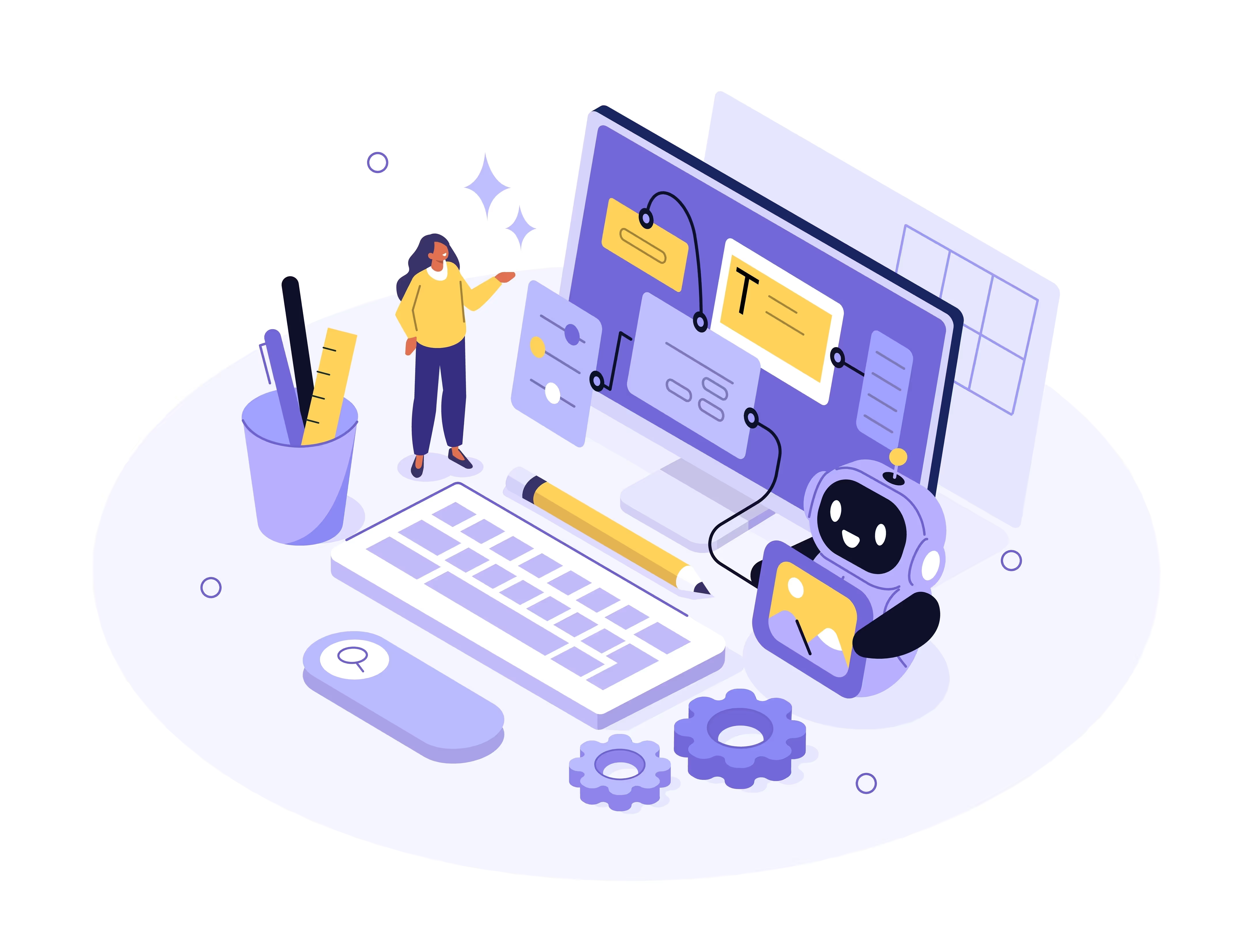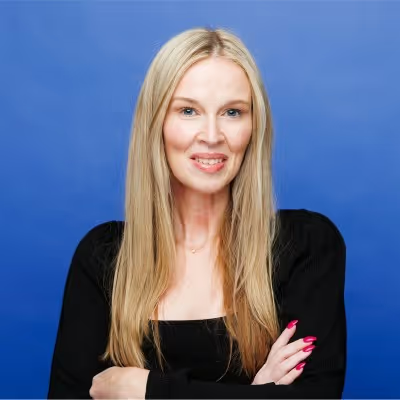Skills@work 2025: Panel Discussion: We Tried That... Now What? Lessons From the Skills Trenches

Skills@Work 2025: Panel Discussion — We Tried That… Now What? Lessons From the Skills Trenches
Across this fast-paced, insight-rich panel, four leaders—Laura Fisher, Jenna Filipkowski, Jo Mills, and moderator Teila Evans—dug into what actually works (and what doesn’t) when implementing skills-based learning. With a mix of honesty, lived experience, and research-backed practice, they explored why programs fail, how to measure impact, and what it truly takes to help people build skills that transfer into behavior change.
Session Recap
This session centered on the gap between launching learning programs and actually moving the needle. Each speaker shared candid lessons from the field—highlighting real challenges such as scope creep, ineffective delivery methods, and the difficulty of measuring whether skills are being applied.
Jenna Filipkowski opened by naming one of L&D’s biggest issues: doing too much. Broad programs become meaningless. Instead, she focuses on identifying the discrete skills (core, emerging, critical) the organization needs, who needs them, and designing learning that maps precisely to those needs.
Laura Fisher emphasized how L&D often falls short by being too nice—not honest enough with participants about where real skill gaps exist. She noted that organizations can scope needs well, but struggle to deliver programs that push people with the candor and rigor required for real development.
Jo Mills highlighted the overwhelming learning landscape. With endless content at people’s fingertips, the real challenge is helping employees connect the dots: what skill matters most right now, for me and for the business? She stressed the importance of linking learning to business outcomes and personal career mobility.
The panel explored measurement, where all agreed: it’s hard—especially for durable, interpersonal, and leadership skills. Laura shared JetBlue’s approach of measuring whether learners apply skills 30, 60, or 90 days later. Jenna described pairing leadership programs with coaching to reduce discomfort and increase application, tracking competency growth pre- and post-program.
They also shared failures—programs that missed the mark because content was too conceptual, outcomes too vague, leadership buy‑in too weak, or scenarios too clean to feel real. All agreed: when learners don’t know what concrete action to take next, the program hasn’t done its job.
The panel closed with advice for practitioners taking their first or next step: know your business deeply, design with empathy by sitting in the participant’s seat, connect learning to an individual’s personal why, and create experiences that feel like real life—messy, sticky, and nuanced.
Key Takeaways
- Narrow the scope. Broad L&D programs dilute impact—design for discrete, business-critical skills.
- Be honest about skill gaps. Clarity beats niceness; development requires candor and specificity.
- Cut through the noise. Employees are overwhelmed with content—guide them toward what matters now.
- Design realistic scenarios. Messy, ambiguous, multilayered simulations build real-world problem-solving.
- Measure application, not enjoyment. The key question: Did they apply this skill 30–90 days later?
- Reduce learner discomfort. Pair programs with coaching or cohort support to increase behavior change.
- Link learning to strategy. Know your business, your customers, and the work to be done.
- Put yourself in the participant’s shoes. If you can’t answer your own reflection questions, learners can’t either.
- Leadership advocacy is non‑negotiable. Programs succeed when leaders use and reinforce the content.
- Connect learning to the individual’s future. Help people see how today’s skills fuel tomorrow’s opportunities.
Final Thoughts
The panel reinforced a core truth: effective skills development is less about delivering more programs and more about delivering the right experiences—precise, honest, realistic, and deeply connected to both business strategy and individual motivation. Real learning is uncomfortable, often slow, and requires reinforcement, clarity, and leadership advocacy. When L&D teams narrow their focus, design with empathy, measure real-world application, and help employees connect learning to their future, skills-based transformation becomes not only possible but sustainable.
Program FAQs
- What’s the most common reason L&D programs fail?
Overly broad scope and unclear behavioral expectations. Learners walk away inspired—but unsure what to do next. - How can we measure durable or interpersonal skills?
Track self-assessment and application over time (30–90 days). Use existing operational metrics when possible. - How do we increase learner application on the job?
Add coaching, practice, messy scenarios, and ongoing reinforcement. - How do we build leadership buy‑in?
Connect programs directly to business objectives, and embed skills into leader routines (1:1s, check-ins, reviews). - What makes a scenario “sticky” and realistic?
Ambiguity, grey areas, curveballs, and incomplete information—just like real work. - What baseline data should we capture pre‑program?
Self-assessed competencies tied to your organization’s competency model or critical-skill framework. - How do we support overwhelmed learners?
Guide them to the one or two most business-critical skills and personalize the learning path. - How do we ensure programs support business goals?
Know your strategy, know your customers, and map learning outcomes to strategic workforce planning. - How can we address “job hugging” and low mobility?
Expose people to targeted reskilling opportunities (AI skills, projects, mentoring, gigs) aligned to business needs. - Where should L&D teams start today?
Get close to the business, sit in the participant’s seat, narrow the skill focus, and deliver hands-on practice tied to real work.
I appreciate it, Zach, as always. Um, welcome, welcome to everybody. I don't know if you're just now tuning in or if you had a chance to check the, check out the opening remarks and hear from the accelerators before us. And like Zach mentioned, I know we have some other ones after. Um, but my name is Tila. I'm the head of partnerships at, uh, think Human. So we really serve HR and l and d leaders in building skills in their organization. Um, and I'm just incredibly honored to be moderating the session for today. Uh, it's called, we Tried That Now, what lessons from the Skills Trenches? Um, so we have a pretty jam packed minutes for today, um, joined by these fabulous speakers that you can see here. Um, and so just to really orient and ground us for the conversation we're gonna have, you know, really the intention is that we can crowdsource the ideas on how to really move the needle, um, move the needle forward, that skills-based learning, right? So really understanding what could be holding us back as we launch programs. What learnings can we take with us to really help define those measurements for success and deliver, uh, better outcomes. So, um, without further ado, I'll go ahead and ask, uh, our first question for today. Um, and feel free anyone to, to answer first. Um, so if you wanna just, you know, introduce yourself and your role and then share what do you see as like the biggest challenges that people are facing when it comes to really implementing and, uh, implementing learning and development programs? I could go first. Hi, um, I'm Jenna Kowski. I just wanna preface that the views I share today are my own, and not that I'm my employer or the Federal Reserve System. I have to, I have to say that. Um, so just briefly a introduction. So I am a new learning leader. I am joined and got this head of learning job months ago. That being said, like, I'm forced and foremost an organizational psychologist. So I really understand how psychology and behavioral science and data meet the workplace and how do we improve work through understanding humans and understanding the data behind them. So, um, I'm very excited to, to stretch myself and be the head of l and d and what I, what I, so I'm, I'm kind of like, I'm not an expert in this. I don't think months in a job is gonna make me an expert in learning and development, but of course I've been studying and researching this for a long time. Um, but I think what I see the biggest challenge today, and just from my perspective, is that we're just trying to do too much. A lot of our programs are so broad, they end up being meaningless. So what I really help to do with my team is what are the discrete skills that are both core emerging and critical that our organization needs? Who needs them? And how do we develop learning experiences to meet that? Exactly. Um, so we're trying to be more discreet and less broad be, and that's hard to do, but it, I think it's imperative to do to actually make an impact, um, with our work. I love that. That's great, Jenna. Thanks Jenna. I'll go next. Um, Laura Fisher, I lead the organizational effectiveness team at JetBlue. Also my own ideas now, those of my employers, I appreciate that. Um, which includes leader development as well as org development and change management. I think one of the biggest challenges I see us facing, um, is I think we're really good when we're scoping at defining what the skill gaps are and what, uh, what the organization needs. But when it comes to actually delivering those programs, we're not nearly as honest with participants about where we are or where they are in terms of those skills. And so I think we're a little too soft and nice, and that's actually preventing us from closing the gap in those skills. Like, that's good. Hi everyone. I'm Joe from Fuel and as, uh, president and founder of Fuel . Um, my ideas are those of our organization, so really grateful, have an opportunity to share them with everybody. So just in terms of, um, you know, fuel , we are a skills intelligence and talent marketplace technology. So we help organizations figure out what skills you have, what skills you need, and then how to bridge the gap, um, with learning and development initiative, you know, via gigs, mentoring, connection to learning pathways, career pathways, and more. So our software has a really measurable and meaningful impact on re-skilling velocity and internal mobility. But in terms of the question I really loved, um, what Laura was saying just around how do you cut through the noise? And I, I think that's the biggest challenge because as we know, our people are bombarded with, um, you know, LinkedIn learning, where they're bombarded with, um, YouTube. There's, there's so many different ways that we can grow and learn. And I think our role is really helping them to connect the dots to what is the most impactful learning for them to do now in order to not only help their own career aspirations and their own career growth and their own optionality for the future, but also linking that to real business impact. So I think that's the biggest challenge, is how do we make it real and tangible, and how do we support people to understand the why, you know, why is this learning important? Why is it important to me as an individual, but also to my business? That's such a good point. I mean, I think Dora even just had like a, you know, in his talk before us, right? Talking about how do we actually align mm-hmm. The initiatives and programs that we're doing to the business. Um, and then Laura and Jenna, I love like hearing that as well around just that there's a lot of different things that, um, you know, l and d leaders can do. And so it's really important to help, help kind of like narrow in that focus, um, and also talking really about that delivery. So, um, would folks be willing to share an example of an initiative that you built that you feel like really helped move the needle for your organization? Like how did you go about measuring it and what did you learn? I'll kick it over you. How Joe, we'll go back to you since you did, you did the last. Yeah, sure. So we work with lots and lots of different organizations who tackle this in different ways. And I think it comes back to, um, do said this, this as well is, you know, what's really the business problem that you're trying to solve? So articulating that really clearly at the beginning makes the measurement a lot more easier. What we see, um, with organizations implementing, so gig programs or mentoring programs, is really honing in on the skills that they're hoping to develop over that period of time. Um, you know, which skills are the hot skills that are really critical for your organization. And then tracking proficiency level development in those skills. So we like to help our organizations that we work with really narrow down on those critical skills and then what are the, the proficiency uplifts they're really looking to achieve. And we've seen it work really well. So, for an example, you know, an executive skills program, you know, leadership skills really critical. We've seen , you know, percentage point increase in skill proficiency as a result of targeted learning initiatives, which might be mentoring programs or, um, you know, on the job learning exercises and strategic projects as well. So I think that's where we see the, the measurable, um, impact is where you're really targeted about what needle you're trying to move. I'll, I'll build on that. So I'm gonna say the quiet part out loud. Measuring is really, really hard. Um, especially when we're talking about durable, what I like to call durable or interpersonal skills. Um, it's really hard. Mm-hmm. And when we send people through a program, honestly, I don't really care about whether they liked it or not because learning is uncomfortable. Um, we do want them to like it so they come back, but at the same time, I would rather have them not particularly like an experience, but learn something and do something different on the job. So the, the measurement regardless of the program, the question that I'm most curious about is or days later, how are people responding to, did I learn something, did I learn a skill in this program that I have applied on the job because it's really what I care At the end of the day, they could have a lovely experience. A lot of times they go back and don't do that much different. I think we've all probably experienced that. I've had something like, oh my gosh, that was such a cool experience. And then we go right back into our day to day and do nothing different. Um, so what the question that I really pay attention to is, did people app apply, learn something, and then later did they apply something to their day to day to do differently? And, and Laura, I just wanna follow up with that. How do you then, uh, know if they've applied that? Do you like go back and you ask them directly? Do you ask like their managers? Like, what's that? And if you have a large scale organization, how do you kind of systematize that? Great question. Um, we do ask, we ask participants directly, both immediately after, and then all we're trying to get better at actually asking or days, days later, we have tried asking their managers or people who've worked with participants. And honestly, the part, the participation or the response rate has been so low that, uh, it's not very meaningful. So getting people to respond has been really tough. We do look for existing measure ways that we can measure, um, metrics. I work at an airline, so we do have a lot of operational metrics. Um, so if there's, if we can tie the behavior to an operational metric, we'll keep an eye on, on those things, whether it's net promoter score or on time performance safety metrics. Um, so where we can, we try to use existing measures. Um, but it's really tough. Yeah. And response rates are pretty low. And I, and I wanna, and then Jenna, I want, I definitely want you to hop in, but I feel like, Laura, you've made a couple comments about like, that the delivery of the programs and being really authentic. And I know we had some other folks that really agreed with that, um, as well. So how has that changed how you delivered the programs at JetBlue? Like what, what is, what do those changes actually look like for you? Yeah, getting as, uh, trying to bring the real life into the classroom as much as we can. So through scenarios, um, which I'm sure everyone has some build some something included of scenarios, role plays, things like that. What I found really makes the difference is make your scenarios sticky and messy and not very clear. And it's more realistic if there isn't a clear outcome. And then you can, you can like sort through that gray stuff and that there isn't necessarily a single right answer. 'cause I think we often fall into giving clean scenarios where the answer is very obvious. Mm-hmm. Mm-hmm. But then they go into the operation or into their normal life and nothing is that clear. And so they don't, we didn't really give them the skill on how to navigate the gray. So trying to use sticky, um, I'm say like, yeah, messy throwing in curve balls. So sometimes we'll start with a scenario that's fairly straightforward and give them a few minutes and then throw in a curve ball and say, oh wait, here's some other information that you didn't, that we didn't give you before. That changes the obvious answer. And so they have to work through the gray. Mm-hmm. Um, the other thing that we have found really impactful is when you're building, when you're doing a role play scenario, only giving one person a role to play and the other person, um, or other people have to react naturally. So, um, for example, with our in-flight crew members will give, will make somebody a customer and they have to act out something customer, and then the, the in-flight or the flight attendant has to respond as they would. And they, so they're in, you know, a strange situation. They've never, they've never counted countered. And then they get feedback on how they responded. So how are they responding with was it the right response? And you can actually troubleshoot through some of those things, um, but really trying to make it challenging and not so easy. Um, and then trying to take some of the acting out. So you're saying, oh wait, how would I act? Yes, act like you would act in real life. Right. I love that. The like real world like scenario. And I love that like operate, helping them, helping people understand how to navigate the gray, right? To be able to think about like their toolkit of how they can respond to something. And this is how you can navigate it. Like it's not always gonna be a perfect, um, scenario every time. So it's like how do you help build those skills to nav to have those like critical thinking skills to navigate. Um, thank you for sharing. And Jenna would love to hear from you. Could you share also just an example of an initiative that you've built and how that helped move the needle? Yeah, absolutely. It's definitely connected to what Laura said, that learning is uncomfortable and also learning that learning takes time. So growth takes time and effort. Yeah. And uncomfortableness. So how do we support our learners during that? 'cause not everyone wants to run into something that feels uncomfortable or unknown. Um, so what we've done is in all our leadership development programs, we gave everyone a personal coach. So how do you use what you're training and learning on, but also get personalized support during that period? And we found, obviously people, the reviews are good, but the measurement is also strong. So what are people's competencies self-assessed, um, prior to the coaching and the learning, and then what is it post? And looking at score differences and score change and, and we do see them. Um, so that tells me that like having training plus coaching plus this cohort experience is one way to reduce that uncomfortableness so people are in the right mindset for learning. It gives 'em the personalized support that they need for their stage and also, um, we're able to measure. So that, I always like that. I love that. And can we, can we go a little bit even deeper, Jenna, I feel like, um, so you, I know you've talked about like having clear per proficiency benchmarks to really like help, like the self-assess in the beginning and the self-assess at the end. Can you share a little bit more about like the kind of baseline metrics you've gathered and what you've noticed from the beginning and to the end of delivering a program? Yeah. So we have like, um, a bank-wide organization-wide competency model. So those are questions that are present inside the assessments that people take pre, pre-engagement and then post-engagement engagements are like six months in length. Um, so those are things that are tied to what's important to our organization and what, what we believe how success is achieved at our organization. Um, and then looking at self, again, it's still self assessed. We're not capturing a lot. And we do have capability with that as well. But, um, yeah, so it's really tied to what's important to us and what's very discreet and measurable in, in this, in the assessment. Very cool. Amazing. So, um, yeah, I feel like this is like a, a lot of really good information thinking about how we're delivering programs, how, how we're actually measuring programs, how we can be more intentional about the demographics that we're, um, trying to to serve. Um, so as you, you know, I'm thinking a little bit more about the l and d program. So, um, an l and d program that you've like launched and can you share a little bit about how maybe it failed and what you have done now differently to really address that? So talk a little of kind of those learnings through, um, failure Go. Yeah. So, so many, um, you know, I think there's no, um, l and d professional that hasn't experienced their ups and downs across different programs and they land, you know, the same program can land quite differently based on, you know, the contents that it's launched in. Yeah. Um, I think, uh, one of the, you know, key takeaways that, um, we've seen in terms of the programs that we've witnessed within our clients and our own organization is the criticality of leadership advocacy. So having leaders who are really invested in how do they develop their people and can connect the dots between the learning program that's at hand and their own business objectives as well. So where we see programs be incredibly successful, it's where that leadership support, advocacy and buy-in has been well developed right from the outset. So that would be my one big tip is making sure your leaders are on board and that they're using the l and d programs to really support their own, you know, team success and embedding that into their day-to-day conversations, their monthly reviews, and their performance catch-ups as well. Great. And Joe, could you even share maybe an example of how some of these skill transformations have, like how you've translated them into business impact? Yeah. So all programs have some sort of business impact. Um, you wanna make sure they're having that impact in the way that you really want. Yeah. What we are seeing at the moment is, uh, a lot of job hugging. So there's not a lot of mobility happening in organizations. There's not a lot of, you know, people moving in and out and that's great because you've got a really stable employee population. But the challenge is, is that you wanna make sure people are continuing to grow and re-skill, particularly with all of the amazing new technologies that are at our fingertips. So what we are seeing working really, really effectively is introducing some pretty critical skills around ai, um, and leveraging agents into people's, um, skill profiles and really shining a light on that as a critical skill for people to develop. So this works in a couple of different ways. What it means that people are embracing these technologies as part of the everyday job and looking for ways to apply it to move the business forward. Um, and equally, um, getting ready for whatever the future might bring. So this is really connecting the dots to business transformation, making sure organizations are, um, increasing productivity and increasing velocity in the way that they do their work. But once again, equally supporting the individual so that they feel confident in their future within that business and they know they're growing skills that will enable them to be a really valuable member of the team and that they've got lots and lots of options no matter what technology brings to us in the future. Awesome. Thank you for sharing. Thank you. Thank you Joe. Laura, Jenna, Think go for It. Fail is a big word. Like when you think about like how, why the learning program fail, I think there's so many elements to look at that Yeah. Whether the content, the facilitation, the experience, like the wrong audience, like what was it intent doing, what it intended to do. But I think if you can't answer the question and that, and it's really hard to answer these questions, I don't even think I have the answers. I know many of us don't have the answers these questions, but are you helping people getting better at their jobs? Are you helping the business achieve its strategy through its workforce? Can you answer those two questions? And if you're not or you can't or it's, it's really disconnected from what you're trying to achieve in learning, then maybe that's failing. But I think failing's, it's kind of nuanced, like a really nuanced word. Yeah. Yeah. I think of, um, a place that we fail pretty frequently is we're very good at talking about the concept of things and then even giving examples. Mm-hmm. But not getting concrete enough to Jenna's point at the very beginning of being super discreet, um, in breaking down skills, but then also being super specific in the behaviors. Like onboarding somebody is important. It's hard, it's like you've gotta be intentional, but asking ourselves, if I don't know what to do, did what I just hear actually tell me how to take the first step. And I think sometimes we stay a bit at that semi concrete, but still conceptual enough, um, space that if I don't know what to do, I walk away still not knowing where to start. And so I think that's somewhere we fail pretty regularly and incrementally getting more concrete. Um, yeah, I'm gonna hold there. I talking about this forever. No, I mean that's, it's totally fair. I mean, based off of just even hearing, I can't believe we're already nearing like the end of time. It's like, you know, I think there's a lot of people in this room that are thinking about how do I actually like take that first step? Or maybe they've taken a couple steps and they have stumbled and they have failed and they're not really sure what are the next bets that they should be making. Um, so I feel like this is a good opportunity, um, just with y'all's collective experience. If, you know, you're talking to folks like in the room about how to take that first step, um, because there's so many things that folks can do, where should folks start to take that first step in their programming? I could just speak as a l and d leader and l and d professional right now, just you need to know your business. Like I know we said, we've been saying this for decades, really need to know your customers, your clients, who are the business and what do they need? Where do they want, where are they going? And can you use things like strategic workforce planning to help them understand where they are going and then how do you connect learning to that? Um, so without that, I don't think we could do our work without knowing our business. Yeah. Oh, That's a good one. I'll take it a little in a different direction. I had this aha today talking to my leader development manager. Um, and I think we often, we often get caught in our designer and deliverer and, you know, big problem solver mode and we forget to put ourself fully in the participant shoes. We, we halfway go and we say, oh, that's a good reflection question. But we forget to actually reflect on the question for ourselves. And I think if we can start a practice of going through our content when we're reviewing, not just thinking about the idea of it, but saying, okay, if I'm a participant in this, what am I doing? Can I answer this question? Because sometimes we have really good lofty questions that when I actually try to answer them for myself, I'm lost. And therefore facilitator's not gonna get what they want. Um, and it's hard to move forward. So, so putting ourselves in participant mode as we're, as we're pressure testing things is something I don't think we do enough. I really love that. And I think the only ad would be, you know, to the putting yourself in the participant's shoes is, you know, once again connecting to their why. So making it really clear how this learning program is gonna support them in their aspirations and in their career growth. We all need to, to connect the dots to our future and to our own success as well as that of the organization. And that gives us that aspirational link, which creates that energy and passion for learning, which is so important to see the results. I love it. Well, I hate to say it, but we have to end here. Um, it was a quick, uh, minutes. I know, um, Zach and team will be sharing some like LinkedIns of like how you can connect with us, with us after, um, afterwards. And to Laura's point, I feel like we can keep having, you know, more and more discussions 'cause there's so many nuances to the l and d programs and teams. Um, I feel like a lot of things I've been hearing from today's conversation is like that effective skills training, um, is a really key like outcome You're going for, really looking for that narrow flow focus. Think about the populations you're trying to serve, get those clear benchmarks, um, and really get that hands-on practice. They can mimic those real world situations and actually apply and adopt 'em. Um, so I just wanna give a big thank you to Jenna, Joe, and Laura for sharing your time, your experience, your wisdom with us. Um, and thank you all and I'll go ahead and pass it over to Zach.

